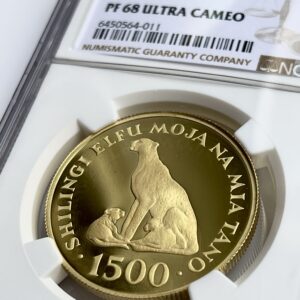Tanzania is an extremely popular destination in Africa, known for its exotic wildlife and rich culture. Simply put, it is one of the most iconic safari destinations in the world. Here you can observe amazing wildlife, including the great wildebeest migration and many other highlights.
Geographical location
The United Republic of Tanzania is located in East Africa and borders eight countries: Kenya and Uganda to the north, Rwanda, Burundi and Congo to the west, and Mozambique, Malawi and Zambia to the south. The eastern part of the country is washed by the Indian Ocean. Besides the mainland, the state also includes some islands: Zanzibar, Pemba, Mafia, etc.
Tanzania is situated on a plateau and is surrounded by mountain ranges in the north. Six rivers flow through the country. Tanzania also has lakes, the most famous of which is Lake Victoria.
Some interesting data about Tanzania:
- Area: 945.000 km²
- Population: nearly 65 million people (as of 2022) https://worldpopulationreview.com/countries/tanzania-population
- Language: Swahili, English, African dialects and dialects
- Currency: Tanzanian Shilling
- Capital: Dodoma
- Religion: Christianity, Islam, Paganism
Dodoma – capital of Tanzania
- Date of foundation: 1907
- Population: 180,541 (as of 2022)
- Area: 2 576 km²
Dodoma City is the national capital in Tanzania and the capital of Dodoma Region. It was founded in 1907 by German colonists during the construction of the Tanzania Central Railway. In 1974, the Tanzanian government announced that the capital should be moved to Dodoma for social and economic reasons in order to centralize the capital within the country. It has been the official capital since 1996. However, much of the original project never materialized, and government agencies and embassies resisted moving offices to Dodoma. Therefore, Dar es Salaam (Swahili and English Dar es Salaam) – Tanzania’s largest city (2.7 million people in 2022) – remains the commercial and de facto capital of Tanzania. Dar es Salaam is also the richest city in the country and an important economic center in the region.
The Dodoma region is not only a well-known area for agricultural products such as beans, nuts, coffee, tea and tobacco, but also the center of Tanzanian viticulture with two vintages per year and a production of excellent wine mainly for local consumption.
Gogo is a Bantu language spoken by the Gogo people in the Dodoma region of Tanzania. The language is spoken throughout the Dodoma region and in the neighboring Manyoni district.
Tanzania – Places of interest
Tanzania is the country with the greatest untouched nature, the best safaris on the continent, the highest peaks in Africa and azure beaches; savannahs with wildlife, volcanoes, ancient tribes and many unforgettable moments.
Special highlights:
- Kilimanjaro
- Zanzibar
- Masai village and soda volcano
- Serengeti National Park
- Ngorongoro National Park
- Lake Manyara
- Tarangire National Park
Kilimanjaro (English: Kilimanjaro) is a mountain massif in northeastern Tanzania. The highest mountain of the massif is Kibo with 5895 m height. Kibo is the highest mountain in Africa and thus belongs to the Seven Summits, the highest mountain of each of the seven continents. Thus, Kilimanjaro (it is also called the “white queen” of Africa because of its snow-white shimmering cap) is one of the most famous peaks in the world and is definitely worth a trip.
Tourists can admire Kilimanjaro from afar during a safari for free, but those who want to climb the peak must book a tour, because climbing without a guide is strictly forbidden. The Kilimanjaro climb can cost from €1,400 (standard) to over €7,000 (luxury package) and more. For the ascent you should plan a period of about 7-9 days. Anyone can climb Kilimanjaro, provided they are patient and resistant to mountain sickness. Altitude-related problems are the most common reason climbers turn back. Statistically, about 40% of climbers reach the summit.
Zanzibar is not a single island, but a group of islands off the coast of East Africa. There are two major main islands, Pemba and Unguja – the latter is sometimes informally referred to as “Zanzibar”. Zanzibar is a year-round destination in terms of temperatures, with average daily highs between 28 and 32 degrees and nightly lows between 20 and 25 degrees.
The capital of Zanzibar is Zanzibar City and not Stone Town as many believe. Stone Town is the historic town within Zanzibar City, famous for its maze of narrow streets, historic buildings and old spice markets.
With live reefs surrounding the islands, Zanzibar is a prime diving destination even for novice divers. The water temperature is warm, visibility is usually excellent, there are a lot of colorful fish.
Zanzibar is or, better to say was, the home of the Zanzibar leopard. This beautiful wild cat is considered “possibly extinct” as none have been sighted for several years.
The Masai village is always worth a visit to see one of the oldest tribes in Africa and climb the only soda volcano in the world.
The Ol Doinho-Lengai soda volcano (also known as God’s Mountain) is the only volcano in the world with a carbonatite lava composition. This one has a black color. And offers fantastic views over the valley and a visit to the village of one of the oldest Maasai tribes in Tanzania, which is an attraction in itself. The village is right at the foot of the volcano, and you can also visit the ominous Lake Natron, which is considered cursed by the locals. Lake Natron is famous for its red water that kills all life (the color is due to its composition of salt, soda, alkali, sulfur and phosphorus). Flamingos cleverly use the small islands of the lake for raising their young, because there they feel safe, as predators simply cannot reach them.
Serengeti National Park –
Visiting Serengeti National Park is a dream of many. The name “Serengeti” comes from the Masai language and means “endless plain”.
The Serengeti is a protected wilderness of nearly 15,000 square kilometers, home to some 3,000,000 species of animals and 500 species of birds. One of the most popular reasons to visit the Serengeti in Tanzania – and the most popular of all activities in the Serengeti – is the Great Migration. The Great Migration is one of the Seven Wonders of Africa and involves the migration of some 2.5 million wildebeest, zebra, antelope and other grazers. Whenever the herbivores leave, lions and other predators follow them.
The Serengeti is one of the most visited wildlife reserves in the world. Each year, more than 150,000 international and 100,000 domestic tourists visit the park.
The safari trip is one of the best reasons to visit Serengeti on safari.
Even if you don’t come during peak migration season, you will enjoy excellent wildlife viewing. Lions, leopards and cheetahs are frequently sighted, as are buffalo, rhino and elephants.
Ngorongoro National Park – is a nature reserve in the huge crater (about 21 km in diameter) of an extinct volcano from long ago and one of the most interesting places for safaris.
Ngorongoro National Park is not an ordinary park, but is located in the crater of a volcano. Here, at 2,286 meters above sea level and 610 meters deep in the crater, is the largest concentration of animals per square kilometer. These animals are “trapped” because they cannot escape from the crater, so over the years a unique habitat has developed here, which is well worth seeing. Besides antelopes, lions, buffalos, hippos, cheetahs and elephants, rhinos are also very likely to be seen here, but are rarely seen on safaris. The crater is also home to the beautiful Lake Magadi, known for its large flamingo population.
Lake Manyara in the national park of the same name is famous for its incredible number of pink flamingos. They are most abundant from June to September, while the flamingos migrate to other lakes during the rest of the year.
Besides the flamingos, you can see pelicans, storks, ibises, cranes, cormorants, marabous and hundreds of other bird species that are found only here.
Tarangire National Park – is the next highlight – here you will encounter many elephants walking among the perennial baobab trees, and herds of animals.
Tarangire is famous for its large elephant population and for the fact that during the dry season (July to October) many animals migrate to the river. Watching elephants, buffalo, zebra or herds of antelope gather around the water is a special kind of meditation.
Tanzanian coins
Julius Nyerere has been depicted on the reverse of Tanzanian coins with animals, birds and fish since their beginnings. Julius Kambarage Nyerere (April 13, 1922 – October 14, 1999) was President of Tanzania, from the country’s founding in 1964 until his resignation in 1985. He was born in Tanganyika to a local Zanaki chief named Nyerere Burito and was known by the Swahili name Mwalimu, meaning “teacher,” because of his profession before he became active in politics. Nyerere was the first African head of state to voluntarily retire.
As in other parts of East Africa, clad steel replaced copper-nickel alloy. The circulation series initially included coins ranging from the bronze 5-cent piece to the 1-shilling piece. Starting in 1974, gold or silver coins were issued in higher denominations up to 2,500 shillings to commemorate the anniversary of independence, the Central Bank of Tanzania, or to promote animal welfare. The polygonal 5 shilling coins issued in 1971 to commemorate the tenth anniversary of independence under the FAO coin program featured agricultural products around the face value. This motif is preserved on the regular coins of this denomination. Bimetallic coins of 10 shillings were introduced in 1987 and 20 shillings in 1992, both showing Nyerere on the obverse and the national coat of arms on the reverse.
Our special tip – The gold coin “1500 Shilingi” from Tanzania
Obverse: Head of President Nyerere flanked by flowers
Back: a cheetah with offspring
Inscription: SHILINGI ELFU MOJA NA MIA TANO – 1500 –
You can find this beautiful gold coin in our store.
You may also be interested in:
https://rarecoinv4.wpengine.com/blog/demokratische-republik-kongo-muenzen/
https://rarecoinv4.wpengine.com/blog/niger-das-land-und-seine-coins/
Do you have one or more gold coins from Tanzania and would like to sell them? We look forward to your message !
Discover our gold coin collection from Tanzania in the current range!
-

Tanzania – 1500 Shilingi – 1974 – Cheetah – 33.4g – NGC PF68 Ultra Cameo
2.700,00 €plus shippingDelivery Time: approx. 2-3 days (excluding Saturdays, Sundays and public holidays)





